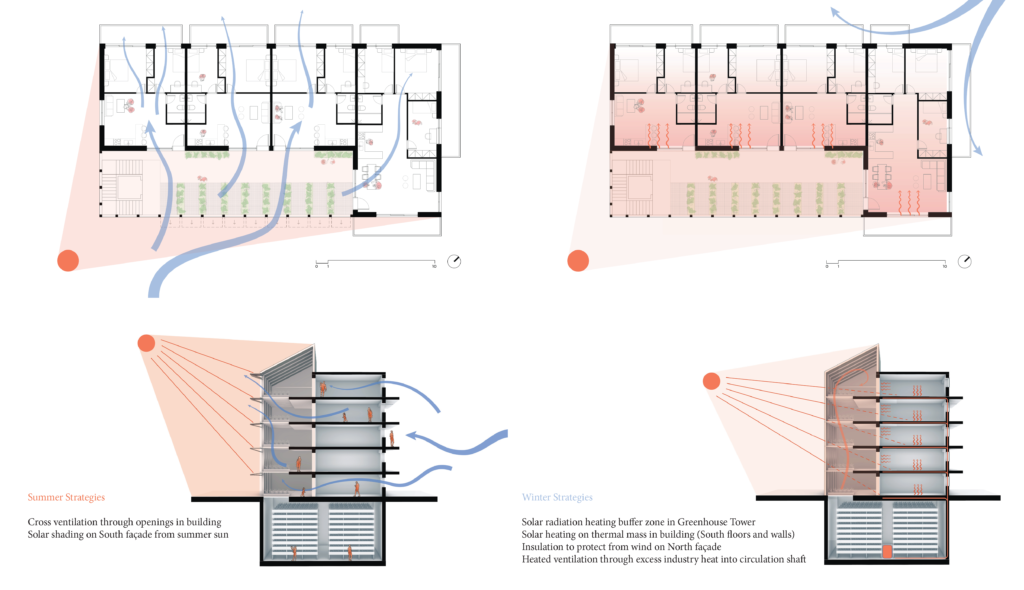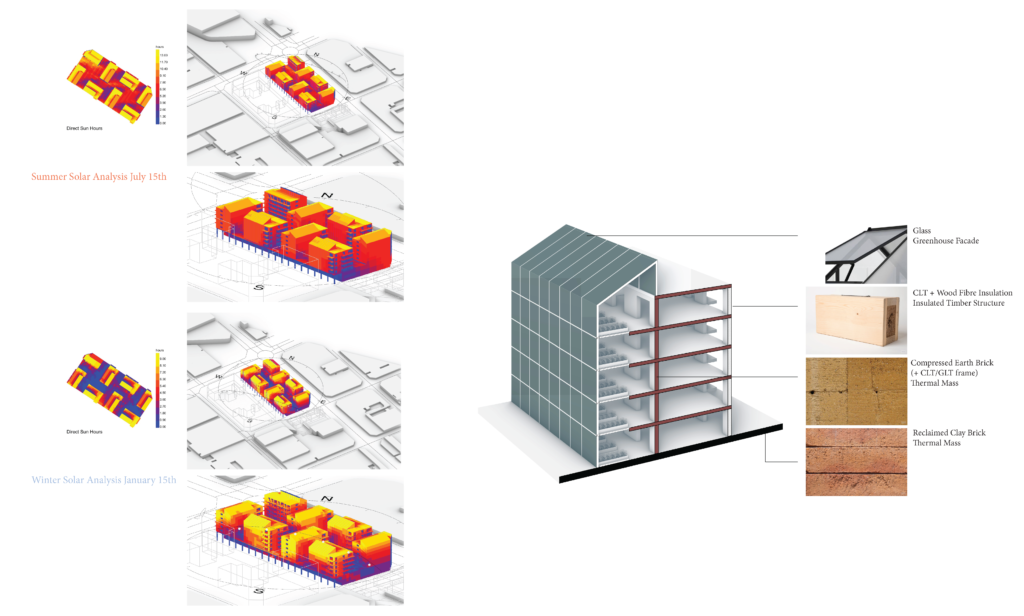Our site is located in St. Adria De Besós, a district nestled in the northeastern part of Barcelona’s urban area, positioned at the mouth of the Besós River. It lies between the cities of Barcelona, Badalona, and Saint Coloma de Gramanet.
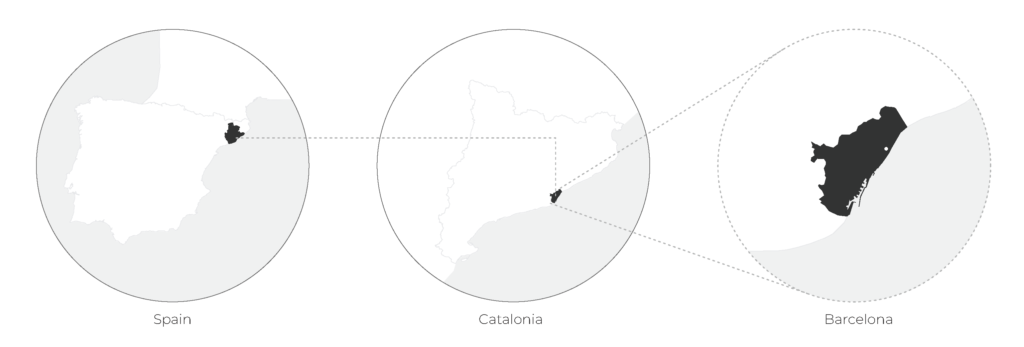
Barcelona has a Mediterranean climate with mild, relatively rainy winters and hot, sunny summers.
The average temperature in winter ranges from 10°C (50°F) to 14°C (57°F), while in summer, it ranges from 25°C (77°F) to 29°C (84°F) The amount of sunshine in Barcelona is acceptable in winter, when there are sunny days but also periods with cloudy skies, and very good in summer, when clear skies prevail. On average, there are 2,500 hours of sunshine per year.
Architectural references

Climate Analysis
Climate analysis tools, such as Climate Consultant, provide valuable insights into the seasonal variations that impact building performance. In this blog post, we’ll explore a summer and winter climatic analysis conducted on July 15th and January 15th respectively, highlighting the key findings and implications for architectural design.

Summer Climatic Analysis – July 15th:
On July 15th, the climate analysis revealed a dynamic interplay of winds and solar exposure. Cooler winds originating from the mountains in the North dominate the morning hours, providing a refreshing wind from the summer heat. As the day progresses, warmer winds from the sea in the South sweep across the region, influencing the afternoon climate.
One of the significant factors affecting building design during summer is the vertical solar path. With up to 13 hours of direct sunlight exposure in the height of summer, architects must consider shading strategies and building orientation to minimize heat gain and optimize natural light utilization. Harnessing the cooling effects of the morning mountain winds while mitigating the heat from the afternoon sea breezes is essential for creating comfortable indoor environments during summer months.
Winter Climatic Analysis – January 15th:
Conversely, the climatic analysis conducted on January 15th paints a different picture of seasonal dynamics. Cool, humid winds prevail from the North in the morning, offering a brisk start to the day. As the day progresses, winds shift to originate from the sea in the South West, influencing the afternoon climate with their moderating maritime influence.
During winter, the shallow solar path results in shorter daylight hours and reduced direct sunlight exposure compared to summer. On January 15th, buildings experience up to 9 hours of direct sunlight exposure, necessitating different design considerations than those in summer. Maximizing solar gain and thermal comfort becomes a priority, with strategies such as passive solar heating and daylighting playing a crucial role in energy-efficient design.
Psychological Comfort
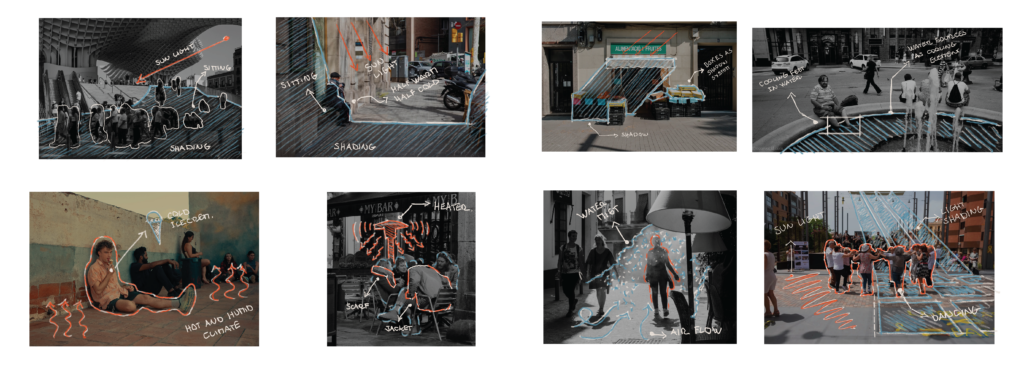
“The people of Barcelona have adopted a range of social and cultural methods to combat hot summers and colder winters. A culture built around time spent outside gives an insight into the way subtle human behaviours can influence thermal comfort.”
Lisa Heschong, Thermal Delight in Architecture
External Massing Strategies

Climatic Prototype
Summer Strategies: During the scorching summer months, mitigating heat gain and maximizing natural ventilation are paramount. Here are some effective strategies for beating the summer heat:
- Cross Ventilation through Building Volume: Designing buildings to facilitate cross ventilation allows for the circulation of fresh air, promoting natural cooling and comfort indoors.
- Solar Shading from Summer Sun: Incorporating shading devices, such as overhangs or louvers, on windows and façades helps block direct sunlight, reducing solar heat gain and glare inside the building.
- Shaded Garden on North Façade: Creating a shaded garden on the North façade provides a cool outdoor retreat, offering occupants a respite from the summer heat while enhancing the building’s aesthetic appeal.
- Green Roof: Installing a green roof not only provides insulation but also reflects solar radiation and cools through evapotranspiration, reducing the urban heat island effect and improving air quality.

Winter Strategies: In contrast to summer, winter requires strategies to harness solar gain and minimize heat loss. Here’s how to keep buildings cozy and efficient during the colder months:
- Façade Oriented to South for Winter Sun: Orienting the building’s façade towards the South maximizes exposure to the low winter sun, allowing for passive solar heating and reducing reliance on mechanical heating systems.
- Solar Radiation Heating Buffer Zone in Greenhouse Second Skin: Creating a greenhouse second skin acts as a buffer zone, capturing solar radiation and providing additional warmth during the winter months.
- Solar Heating on Thermal Mass: Utilizing solar heating systems to warm thermal mass elements such as floors and walls helps retain heat, ensuring a comfortable indoor environment even on chilly days.
- Insulation on North Façade: Adding insulation to the North façade minimizes heat loss and prevents cold drafts from infiltrating the building, improving thermal comfort and energy efficiency.
- Heated Ventilation through Excess Industry Heat: Utilizing excess heat generated by industrial processes for heated ventilation creates a sustainable circulation system, reducing energy consumption and lowering carbon emissions.

External Massing Strategies
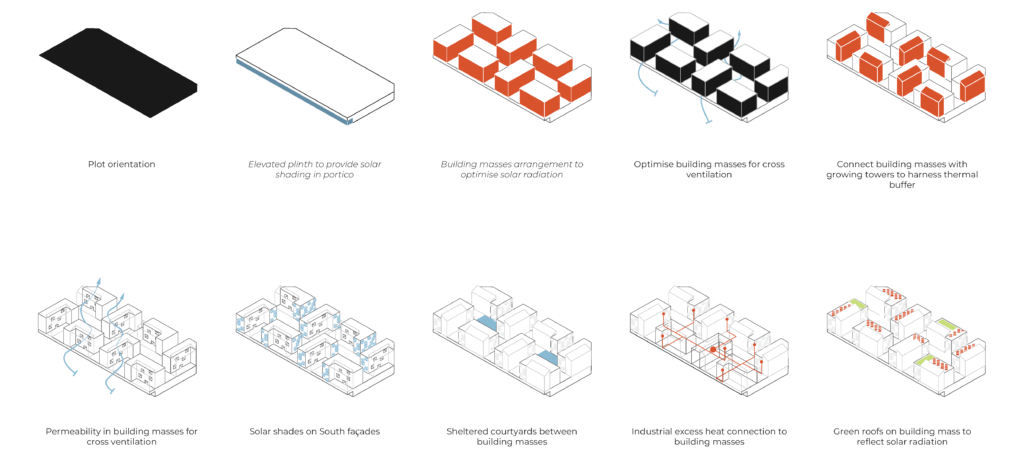
Interior Space And Tectonics Strategies
